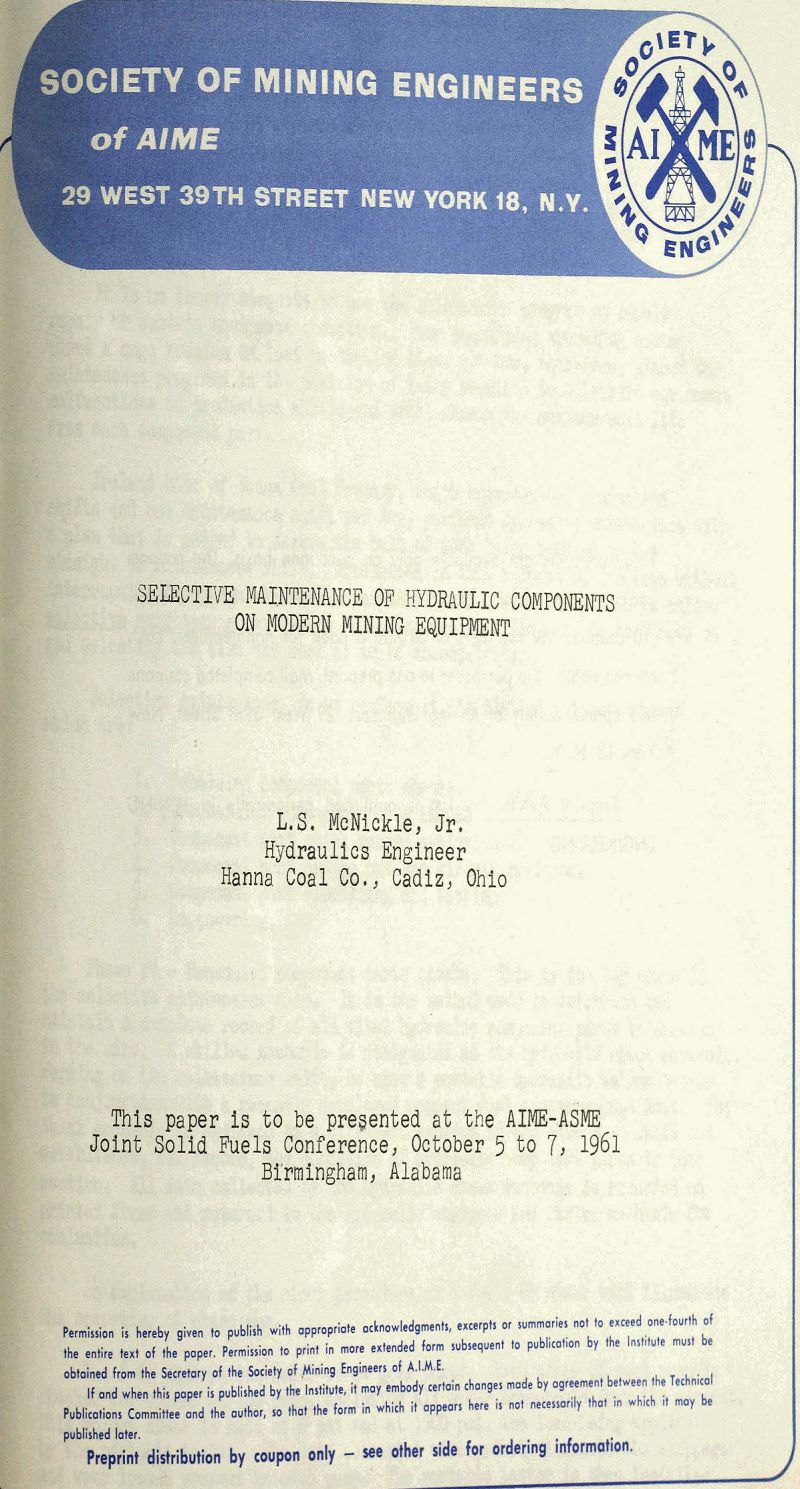Commonly accepted maintenance methods are being outdated by the rapid acceptance and use of more complicated hydraulic circuitry on modern mining equipment.
It is no longer adequate to use the maintenance program to merely repair or sustain equipment operation. Ever increasing operating costs place a huge premium on lost production time. It has therefore placed the maintenance programs in the position of being required to alleviate equipment malfunctions on production shifts and still attain the maximum unit life from each component part.
Selective maintenance as we perform it is divided into six phases which are:
- Scheduled component parts checks.
- Unscheduled component parts checks.
- Component parts check record evaluation.
- Component part change out find circuit revision.
- Component part rebuilding end testing.
- Engineering.
Phase 1– Scheduled component parts checks. This is the key phase in the selective maintenance plan. It is the method used to establish and maintain a complete record of all vital hydraulic component parts in service in the mine. A skilled mechanic is designated as the hydraulic check mechanic. Working on the maintenance shift he uses a portable hydraulic volume tester in conjunction with a recently developed compact dual pressure gage unit.
The miscellaneous, sump and shear wives are chocked in an identical manner and component part weakness beyond the checked unit are easily and quickly spotted.
Phase 2 – Unscheduled component parts checks. This phase is used as a stop gap measures and is administered by the section mechanic or maintenance supervisor of each operating shift at Ireland Mine. In addition to replacement of ruptured hydraulic hoses, maintaining hydraulic oil reservoir and other mechanical problems, the individual section mechanic by employing the aforementioned dual gage pressure unit, will make individual pressure checks and minor pressure adjustments during a production shift.
Phase 3 – Component part check record evaluation. This phase begins with the delivery of the hydraulic check mechanic’s report to the hydraulic engineer and the mine master mechanic. A complete record of each check of hydraulic component parts is retained so long as that part is in service. The facts of the latest report are then compared with the previous data and adherence to the previously developed life cycle pattern is either confirmed or disproved.
Phase 4 – Component part change out and circuit revision. This is the major sustaining phase of the maintenance plan. Proper scheduling, fostered by the opportunity to select the danger spots allows a much smoother flow of labor and allows the work to be accomplished in a precise manner.
The maintenance supervisors are not considered as merely instruments to keep the labor force moving or as procurers of parts. They are expected to contribute to the overall development of better maintenance and longer component part life. Given a definite share a definite voice in the plans of maintenance they have responded in a most gratifying manner.
Phase 5 – Component part rebuilding and testing. This is an extremely critical and important phase of any maintenance plan. Maintenance is never better than the replaced component parts.
A reasonably complete hydraulic test bench is maintained at Ireland Mine. An integrated electric motor, hydraulic motor, hydraulic pump unit with connected monomstars, gages pressure and temperature are used to check the bulk of questionable and rebuilt equipment. Currently the hydraulic test bench is staffed by, one mechanics with additional help supplied if and when peak demand conditions develop.
Phase 6 – Engineering. Although listed as the final phase of the selective maintenance program and being the final work in most cases, engineering is in evidence, in fact it predominates in all phases of selective maintenance of hydraulic equipment. Engineering must be the watch dog the consultant and crutch for each application and problem.
Fluid transmission lines pressure and return, ware resized and rearranged to approach more reasonable velocity rates. Relief valve types and locations were altered to provide smooth accurate control patterns, and the maximum and minimum limits of volume and pressure were positively proven and firmly established as guides by which to base the selective hydraulic maintenance program.

